-
ORIGINAL ARTICLE10-18-2022
Care related to peripheral intravenous catheterism in pediatrics performed by nursing technicians
Revista Brasileira de Enfermagem. 2022;75(2):e20200611
Abstract
ORIGINAL ARTICLECare related to peripheral intravenous catheterism in pediatrics performed by nursing technicians
Revista Brasileira de Enfermagem. 2022;75(2):e20200611
DOI 10.1590/0034-7167-2020-0611
Views0See moreABSTRACT
Objectives:
to evaluate the care practice adopted by nursing technicians before, during and after peripheral intravenous catheterization performed in hospitalized children.
Methods:
cross-sectional and descriptive research, carried out in a pediatric hospital in Bahia through non-participatory observation of peripheral intravenous catheterizations performed in children by nursing technicians. Data was collected through an instrument containing care related to the moments before, during and after insertion of the catheter, calculating absolute and relative frequencies, measures of central tendency and dispersion.
Results:
there were 31 nursing technicians, who performed care mainly before intravenous catheterization. Nonconformities were identified regarding hand hygiene, use of a disposable mask, selection of the catheter insertion site, antisepsis, stabilization and catheter coverage.
Conclusions:
most of the precautions observed regarding peripheral intravenous catheterization are not in accordance with the standards of practice recommended by the national and international literature.
-
10-18-2022
Clinical progression of COVID-19 coinfection in people living with the human immunodeficiency virus: scoping review
Revista Brasileira de Enfermagem. 2022;75(2):e20201380
Abstract
Clinical progression of COVID-19 coinfection in people living with the human immunodeficiency virus: scoping review
Revista Brasileira de Enfermagem. 2022;75(2):e20201380
DOI 10.1590/0034-7167-2020-1380
Views0See moreABSTRACT
Objectives:
to map the production of scientific knowledge on the clinical progression of COVID-19 coinfection in people living with the human immunodeficiency virus (HIV).
Methods:
scoping review, with search strategies in MEDLINE, Scopus, Embase, Web of Science, and LILACS. Dual independent data extraction and analysis of the material with similarity compilation and narrative synthesis.
Results:
sample consisted of 35 articles. Fever, cough, and dyspnea were the most prevalent signs/symptoms. Recurrent complications involved desaturation/worsening of oxygen desaturation and pneumonia. No standard pharmacological treatment was identified, and the main interventions involved the provision of supplemental oxygen and mechanical ventilation. The studies recommended preventive, care, and pharmacological practices.
Conclusions:
the clinical manifestations, complications, and treatments/assistance care for people coinfected with SARS CoV-2/HIV are similar to those of the general population. Coinfection, overall, does not infer a worse prognosis.
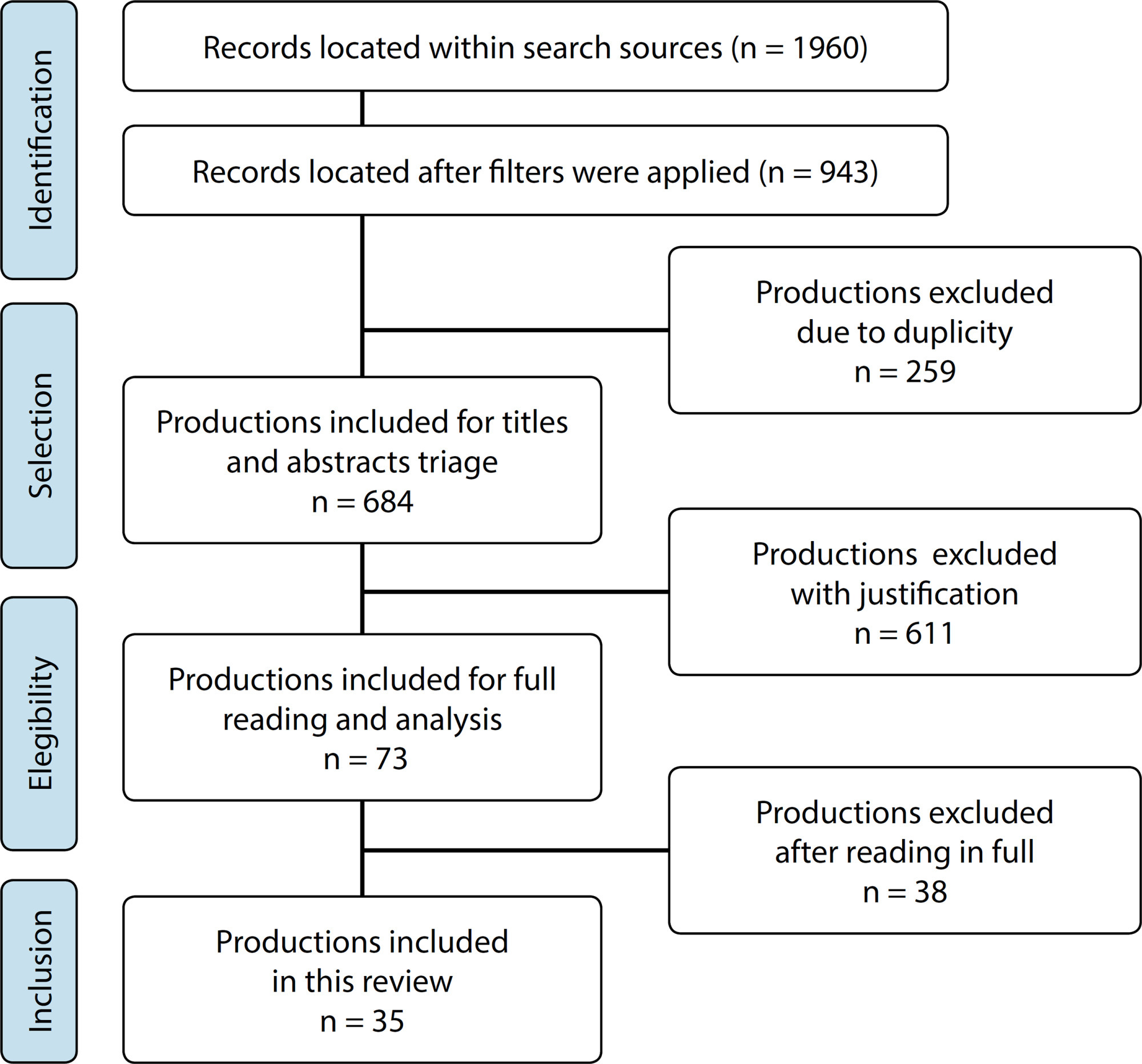
-
ORIGINAL ARTICLE10-18-2022
Death and dying of newborns and children: relationships between nursing and family according to Travelbee
Revista Brasileira de Enfermagem. 2022;75(2):e20210007
Abstract
ORIGINAL ARTICLEDeath and dying of newborns and children: relationships between nursing and family according to Travelbee
Revista Brasileira de Enfermagem. 2022;75(2):e20210007
DOI 10.1590/0034-7167-2021-0007
Views0See moreABSTRACT
Objective:
Identify the nursing staff’s perception of their relationship with families of newborns and children who are in the process of death and dying.
Methods:
Qualitative research, carried out in the Neonatal and Pediatric Intensive Care Unit of a public maternity hospital in Rio Grande do Norte, with 17 nursing professionals, through a semi-structured interview. After being transcribed, the data were subjected to Bardin’s content analysis and interpreted in the light of the theory of Interpersonal Relations proposed by Travelbee.
Results:
Four categories emerged from the analysis: “Caring and welcoming people, feelings and stories”; “Reactions in the midst of pain: moving between acceptance and suffering”; “Communication of bad news: challenges and strategies”; “The weight of caring and suffering”.
Final considerations:
Family assistance can be established using Travelbee’s principles, as they offer timely theoretical support for nursing actions in the context of the process of death and dying.
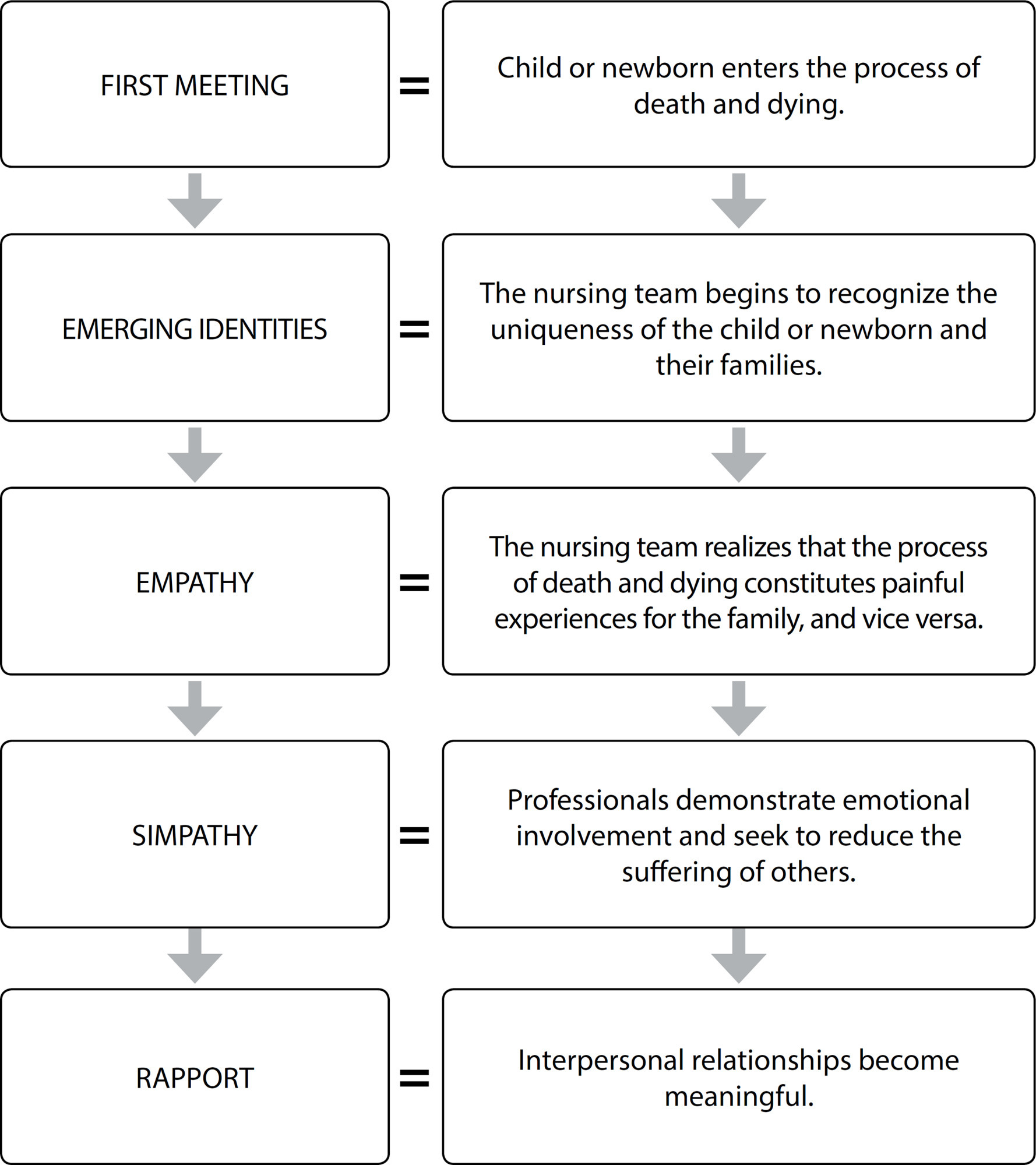
-
ORIGINAL ARTICLE10-18-2022
Health education for hospitalized patient in nursing care: a conceptual analysis
Revista Brasileira de Enfermagem. 2022;75(2):e20200459
Abstract
ORIGINAL ARTICLEHealth education for hospitalized patient in nursing care: a conceptual analysis
Revista Brasileira de Enfermagem. 2022;75(2):e20200459
DOI 10.1590/0034-7167-2020-0459
Views0INTRODUCTIONOver the years, the development of health education practices is related to the historical moment of society(). The nineteenth and twentieth centuries presented decisive situations in the evolution process that we know today as health education. Nursing began to consider health educational practices after Florence Nightingale initially focused on professional training. Florence contributed to the […]See more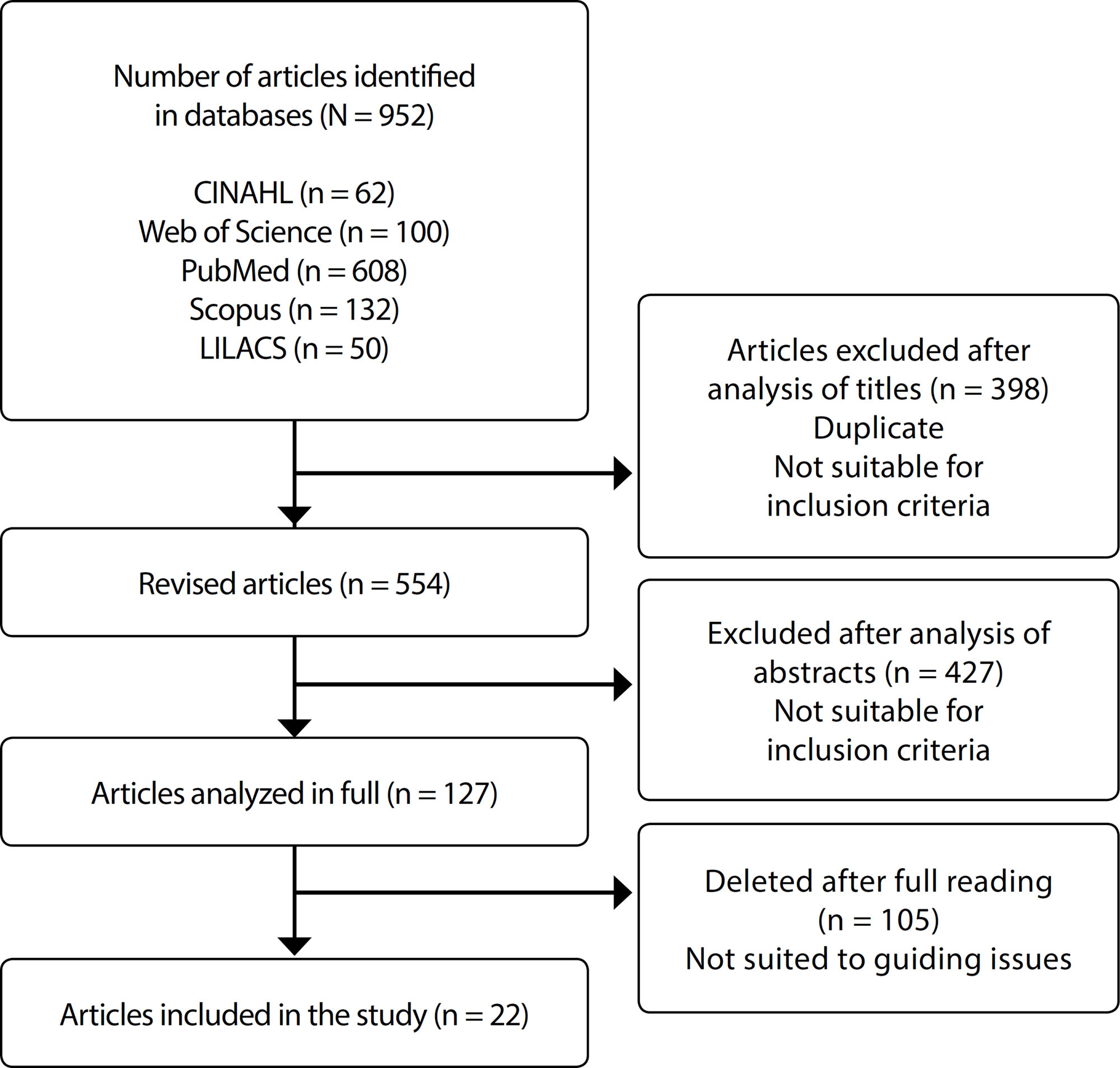
-
ORIGINAL ARTICLE10-18-2022
Impaired knowledge in individuals with heart failure: a middle range nursing theory
Revista Brasileira de Enfermagem. 2022;75(2):e20200855
Abstract
ORIGINAL ARTICLEImpaired knowledge in individuals with heart failure: a middle range nursing theory
Revista Brasileira de Enfermagem. 2022;75(2):e20200855
DOI 10.1590/0034-7167-2020-0855
Views0See moreABSTRACT
Objective:
To develop a middle range nursing theory of impaired knowledge in individuals with heart failure.
Methods:
Descriptive study of the cross type developed through the theoretical-causal validity method, which used six steps for theory building: Definition of the construction approach; Definition of theoretical-conceptual models; Definition of main concepts; Development of a pictorial scheme; Construction of propositions; and Establishment of causal relations and evidence for practice.
Results:
Twenty-four articles were found, which identified two attributes, eight antecedents, and seven consequences, which gave rise to the pictogram, which schematized the concepts by relating them to cardiac physiology. Finally, 11 propositions and four causal relationships were created.
Conclusion:
The constructed theory enables a targeted driving of nurses’ clinical judgment regarding impaired knowledge in individuals with heart failure, culminating in individualized interventions to improve quality of life.
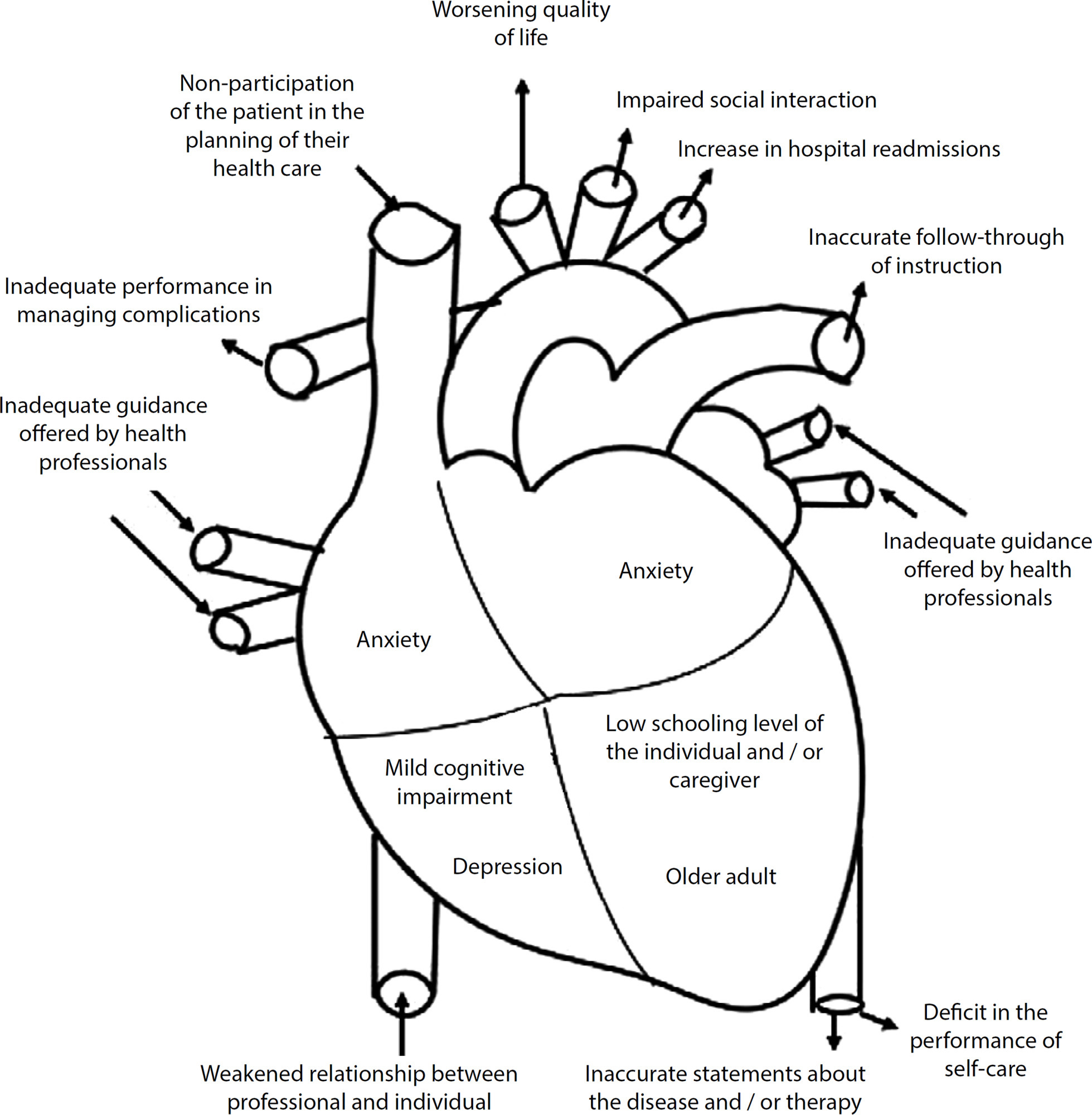
-
ORIGINAL ARTICLE10-18-2022
Adherence to antiretroviral therapy by adults living with HIV/aids: a cross-sectional study
Revista Brasileira de Enfermagem. 2022;75(2):e20210019
Abstract
ORIGINAL ARTICLEAdherence to antiretroviral therapy by adults living with HIV/aids: a cross-sectional study
Revista Brasileira de Enfermagem. 2022;75(2):e20210019
DOI 10.1590/0034-7167-2021-0019
Views0See moreABSTRACT
Objective:
To verify the association between adherence to antiretroviral treatment by adults with HIV/AIDS and sociodemographic factors, social and clinical support.
Methods:
Cross-sectional study, with a quantitative approach. Participation of 230 patients. Questionnaires of sociodemographic characterization, social and clinical support, and assessment of adherence to antiretroviral treatment were used. Descriptive and inferential statistics were performed.
Results:
Adherence was classified as good/adequate. An association with sex, income, employment, and level of education was noted. In social support: having access to health services; communication with health professionals; health education; having support to allow venting/talking about issues; information on HIV/AIDS; and company for leisure. In the clinical profile: non-interruption of the drug treatment due to absence from the service or due to changes in the medical prescription.
Conclusion:
Adherence was classified as good/adequate and especially associated with social support factors, which should be enhanced in clinical practice.
-
ORIGINAL ARTICLE10-18-2022
Professional Safety in the daily life of primary health care: grounded theory
Revista Brasileira de Enfermagem. 2022;75(2):e20210033
Abstract
ORIGINAL ARTICLEProfessional Safety in the daily life of primary health care: grounded theory
Revista Brasileira de Enfermagem. 2022;75(2):e20210033
DOI 10.1590/0034-7167-2021-0033
Views0See moreABSTRACT
Objective:
to understand Professional Safety in daily life in Primary Health Care.
Methods:
this is a study on the Grounded Theory method and the Symbolic Interactionism theoretical framework with 82 health professionals.
Results:
it presents the category “Professional Safety in Daily Life in Primary Health Care: a Grounded Theory” and two subcategories determining and conditioning Professional Safety in PHC: professional training, infrastructure, support and technical responsibility; Professional Safety: physical protection, psychological support, distress and feelings reveal the (un)safe conditions. Professional Safety is mentioned in several dimensions that include professionals’ knowledge, decision-making skills, the practice of the profession and what regulates it, the structure and organization of the Unified Health System and services, permanent education. It presents the context of primary care and the factors that impact an (unsafe) work.
Final considerations:
this study contributes to reflect on Professional Safety to strengthen safety culture in Primary Health Care.

-
ORIGINAL ARTICLE10-18-2022
Quality of life of nurse practitioners during the COVID-19 pandemic
Revista Brasileira de Enfermagem. 2022;75:e20201382
Abstract
ORIGINAL ARTICLEQuality of life of nurse practitioners during the COVID-19 pandemic
Revista Brasileira de Enfermagem. 2022;75:e20201382
DOI 10.1590/0034-7167-2020-1382
Views0See moreABSTRACT
Objective:
to assess the quality of life of nurse practitioners during the COVID-19 pandemic and analyze related factors.
Methods:
cross-sectional and analytical study carried out with nurse practitioners. A questionnaire on sociodemographic characterization, work activities and changes perceived with the pandemic and WHOQOL-bref were used. To compare the groups of interest, analysis of covariance was used.
Results:
572 professionals participated, who had a mean total quality of life score of 56.79 (SD=13.56). In the relationship of variables with WHOQOL-bref, having two or more jobs and being a nurse were associated with better quality of life, but being a woman and working more than 50 hours a week was associated with a worse perception of the construct.
Conclusions:
the factors analyzed indicate a lower perception of quality of life associated with the social domain, requiring interventions that reduce the damage to professionals’ health and contribute to quality of care provided.
-
ORIGINAL ARTICLE02-10-2020
Depression among nursing students and its association with academic life
Revista Brasileira de Enfermagem. 2020;73(1):e20180173
Abstract
ORIGINAL ARTICLEDepression among nursing students and its association with academic life
Revista Brasileira de Enfermagem. 2020;73(1):e20180173
DOI 10.1590/0034-7167-2018-0173
Views0See moreABSTRACT
Objective:
To measure the levels of depression among Nursing students from a public institution of higher education and the association with aspects of academic life.
Method:
Analytical and quantitative study with 203 students from a higher education institution that uses active methodologies. We used Beck’s Depression Inventory and the Likert type scale of academic factors.
Results:
We verified that 19.2% had moderate or severe levels of depression. Higher levels of depression were associated with female gender (p=0.003), working more than 40 hours per week (p=0.047), spending more than 90 minutes to reach academic activities (p=0.043) and with 12 academic factors specific to routines of the studied institution.
Conclusion:
The results contribute to managers’ and professors’ reflection and analysis concerning nursing students’ mental health, in addition to indicating in which aspects there is a need to provide greater support to these students.
-
ORIGINAL ARTICLE10-18-2022
Clinical simulation as a Nursing Fundamentals teaching method: a quasi-experimental study
Revista Brasileira de Enfermagem. 2022;75(2):e20201155
Abstract
ORIGINAL ARTICLEClinical simulation as a Nursing Fundamentals teaching method: a quasi-experimental study
Revista Brasileira de Enfermagem. 2022;75(2):e20201155
DOI 10.1590/0034-7167-2020-1155
Views0See moreABSTRACT
Objectives:
to evaluate students’ knowledge gain after the implementation of clinical simulation in Nursing Fundamentals disciplines.
Methods:
a quasi-experimental intervention was carried out with 60 students, distributed in comparison and intervention groups, who underwent traditional teaching and traditional teaching associated with simulated teaching, respectively. Pre-test and post-test instruments were applied to both groups.
Results:
after analyzing the students’ performance through the applied instruments, both groups had a cognitive evolution along with the taught content, however, when compared, the intervention group obtained a higher knowledge gain than the comparison group (p = 0.016), demonstrating progressive and increasing improvement with the use of the methodology.
Conclusions:
simulated teaching significantly helps students in gaining technical-cognitive knowledge. Therefore, it is recommended to adhere to the use of this methodology for teaching Nursing Fundamentals.
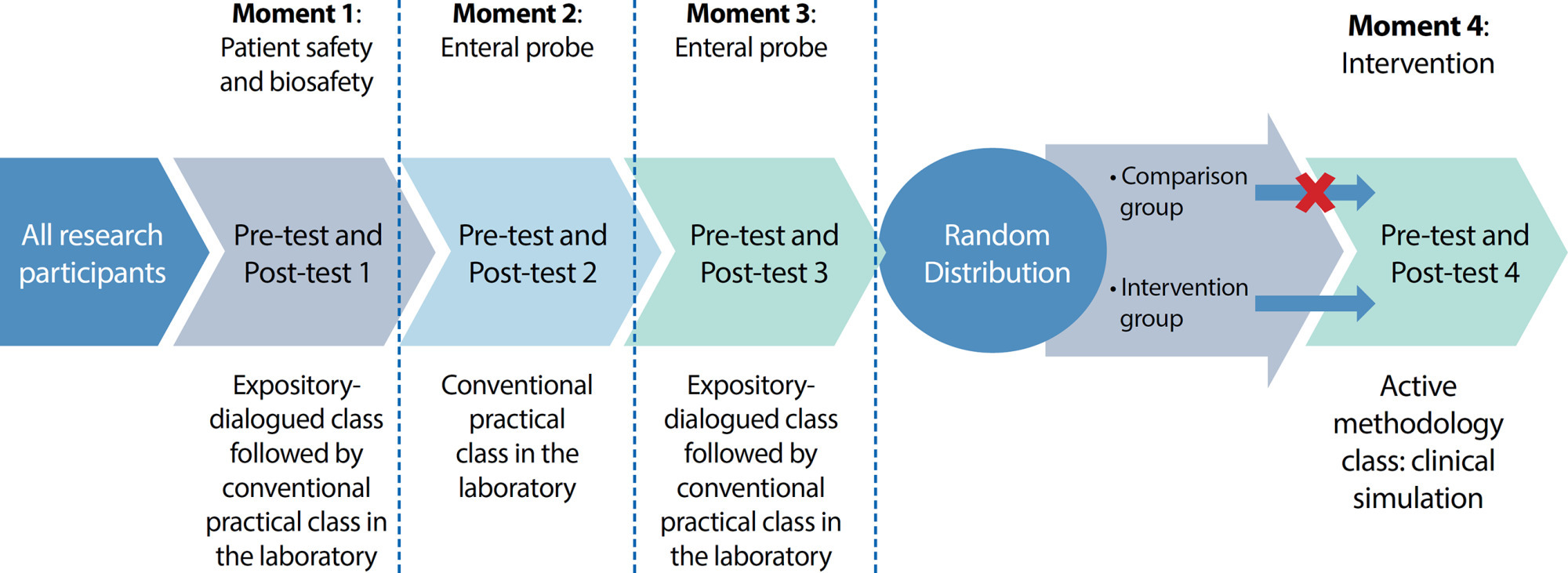
-
ORIGINAL ARTICLE12-21-2020
Construction and validation of a mobile application for development of nursing history and diagnosis
Revista Brasileira de Enfermagem. 2020;73:e20190674
Abstract
ORIGINAL ARTICLEConstruction and validation of a mobile application for development of nursing history and diagnosis
Revista Brasileira de Enfermagem. 2020;73:e20190674
DOI 10.1590/0034-7167-2019-0674
Views0See moreABSTRACT
Objectives:
to describe the construction and validation process for a mobile application for development of the nursing history and diagnosis.
Methods:
methodological study conducted in 2018 in three stages: content creation, based on the Basic Human Needs categories and nursing diagnoses; content assessment by nine nursing judges, with calculation of the content validity index; and construction of the application, which included definition of the requirements, a conceptual map, implementation and prototyping options, tests and implementation.
Results:
the application was organized by sections: Grouped Basic Human Needs, Cranial pair tests, Clinical assessment scales and Additional tests. Two section were adjusted according to the judges’ suggestions.
Final Considerations:
it is the first application produced in Brazil based on the Basic Human Need categories, which enables quick access to information, concepts and typical nomenclatures of semiology, recording of clinical data and definition of nursing diagnoses.
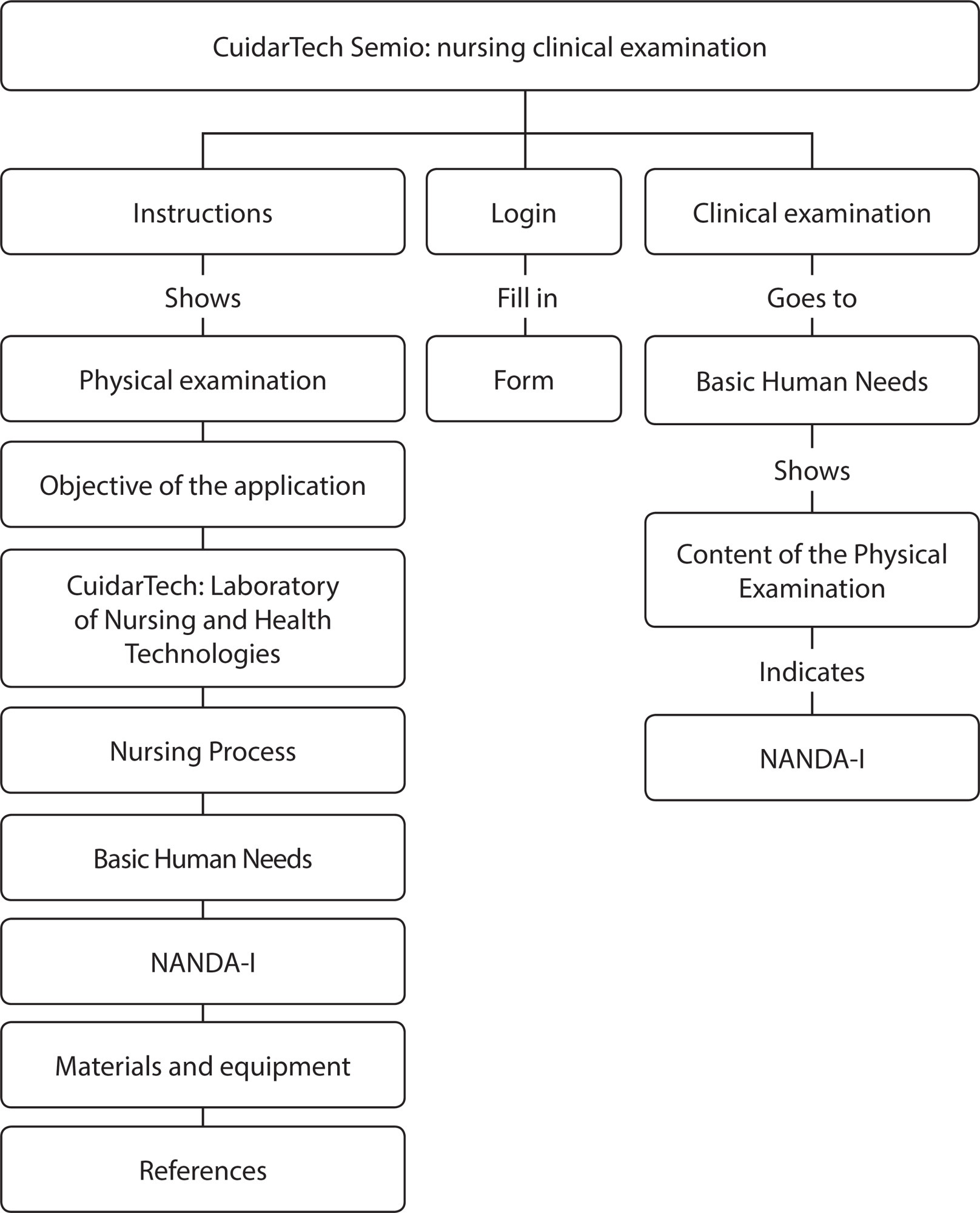
-
REVIEW06-11-2021
Mental health interventions implemented in the COVID-19 pandemic: what is the evidence?
Revista Brasileira de Enfermagem. 2021;74:e20200635
Abstract
REVIEWMental health interventions implemented in the COVID-19 pandemic: what is the evidence?
Revista Brasileira de Enfermagem. 2021;74:e20200635
DOI 10.1590/0034-7167-2020-0635
Views0See moreABSTRACT
Objective:
to map the evidence on mental health interventions implemented during the COVID-19 pandemic.
Method:
this scoping review was carried out in the MEDLINE/PubMed, SCOPUS, Web of Science, PsycINFO, and Science Direct databases and in the medRxiv, bioRxiv, and PsyArXiv preprints servers using the descriptors “Covid-19”, “coronavirus infection”, “coronavirus”, “2019-nCoV”, “2019 novel coronavirus disease”, “SARS-CoV-2”, “health personnel”, “general public”, and “mental health”.
Results:
eight articles were selected and categorized into mental health interventions for the population, among which mental health interventions were for people diagnosed with suspicion/confirmed COVID-19 and mental health interventions for health professionals.
Conclusion:
telemonitoring, virtual games and strategies focused on social support and muscle relaxation techniques, characterized as non-pharmacological and low-cost, were shown as interventions, which, since they are effective, need to be encouraged and included in mental health care practices.
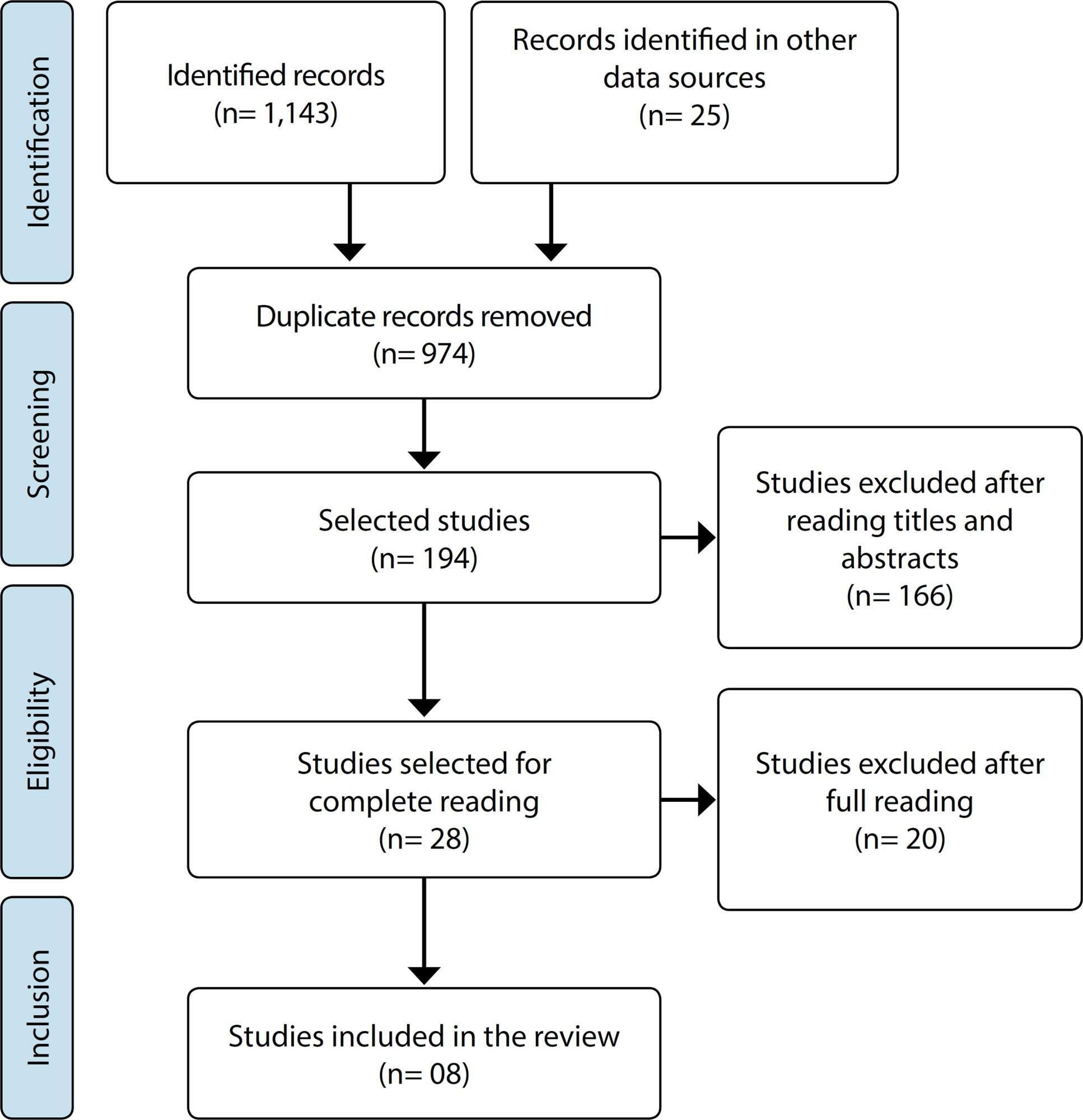
-
ORIGINAL ARTICLE10-21-2019
“Waiting for a miracle”: Spirituality/Religiosity in coping with sickle cell disease
Revista Brasileira de Enfermagem. 2019;72(6):1554-1561
Abstract
ORIGINAL ARTICLE“Waiting for a miracle”: Spirituality/Religiosity in coping with sickle cell disease
Revista Brasileira de Enfermagem. 2019;72(6):1554-1561
DOI 10.1590/0034-7167-2018-0635
Views0See moreABSTRACT
Objective:
To understand spirituality/religiosity as experienced by people with sickle cell disease, and its influence on coping with the disease.
Method:
A qualitative, descriptive, and exploratory study conducted in the State of Bahia. Twenty-nine respondents participated in semi-structured interviews. Content analysis was used to analyze the empirical material.
Results:
Individuals with sickle cell disease experience spirituality/religiosity motivated by their hope for a miracle, and fear of death; among their rites are: reading religious materials, individual and group prayer, and attendance at worship services. The effects on their health include: comfort by means of coping by comparing two evils, anxiety relief, social support, and lifestyle changes; however, spirituality/religiosity may be impaired.
Final considerations:
This study demonstrates the need to qualify health professionals to address spiritual issues of these individuals during illness, with the aims of diagnosing suffering and anguish, and providing care, comfort and strengthening of the spiritual bonds of these individuals.
-
ORIGINAL ARTICLE10-21-2019
Caring ability, burden, stress and coping of family caregivers of people in cancer treatment
Revista Brasileira de Enfermagem. 2019;72(6):1541-1546
Abstract
ORIGINAL ARTICLECaring ability, burden, stress and coping of family caregivers of people in cancer treatment
Revista Brasileira de Enfermagem. 2019;72(6):1541-1546
DOI 10.1590/0034-7167-2018-0605
Views0See moreABSTRACT
Objective:
To analyze the association between the caring ability and the burden, stress and coping of family caregivers of people in cancer treatment.
Method:
A cross-sectional study with 132 family caregivers. The following instruments were applied: a characterization instrument, the Caring Ability Inventory, the Zarit Burden Interview, the Perceived Stress Scale, and the Brief COPE. The Spearman Correlation was used with significance ≤5%.
Results:
There were significant and positive correlations between total caring ability and: burden – interpersonal relationship (p=0.03); stress (p=0.02) and maladaptive coping (p=0.00); and inversely proportional correlations with problem-focused coping (p=0.03). The courage had inversely proportional correlation with: self-efficacy (p=0.03), interpersonal relationship (p=0.00), stress (p=0.04) and maladaptive coping (p=0.00). The knowledge had significant and positive correlation with problem-focused coping (p=0.00), adaptive coping (p=0.01), and inverse correlation with stress (p=0.02).
Conclusion:
The level of caring ability correlates with levels of stress and burden, and with the type of coping strategy used by family caregivers.
-
07-16-2021
Sleep quality and its association with menopausal and climacteric symptoms
Revista Brasileira de Enfermagem. 2021;74:e20201150
Abstract
Sleep quality and its association with menopausal and climacteric symptoms
Revista Brasileira de Enfermagem. 2021;74:e20201150
DOI 10.1590/0034-7167-2020-1150
Views0See moreABSTRACT
Objective:
to assess sleep quality in menopausal women and its association with symptoms related to this period.
Method:
this is a cross-sectional, analytical and correlational study. Sleep was assessed using the Pittsburgh Sleep Quality Index; and climacteric symptoms, according to the Menopause Rating Scale. To compare the total score and each Menopause Rating Scale domain with the PSQI classification, the Mann-Whitney U non-parametric test was used. P<0.05 was considered significant.
Results:
261 women (67.8%) were classified as bad sleepers. There was a positive and significant correlation between the sleep scale scores and the total menopause score and its domains. Women categorized as poor sleepers had worse scores on the menopause symptom scale.
Conclusion:
women with worse sleep quality revealed greater severity of symptoms related to menopause.
-
REVIEW07-06-2020
Patient safety challenges in primary health care: a scoping review
Revista Brasileira de Enfermagem. 2020;73(5):e20190209
Abstract
REVIEWPatient safety challenges in primary health care: a scoping review
Revista Brasileira de Enfermagem. 2020;73(5):e20190209
DOI 10.1590/0034-7167-2019-0209
Views1See moreABSTRACT
Objectives:
to identify the patient safety challenges described by health professionals in Primary Health Care.
Methods:
a scoping review was conducted on the LILACS, MEDLINE, IBECS, BDENF, and CINAHL databases, and on the Cochrane, SciELO, Pubmed, and Web of Science libraries in January 2019. Original articles on patient safety in the context of Primary Health Care by health professionals were included.
Results:
the review included 26 studies published between 2002 and 2019. Four categories resulted from the analysis: challenges of health professionals, administration challenges of health services, challenges with the patient and family, and the potential enhancing resources for patient safety.
Conclusions:
patient safety challenges for Primary Care professionals are multiple and complex. This study provides insight into resources to improve patient safety for health care professionals, patients, administrators, policy makers, educators, and researchers.
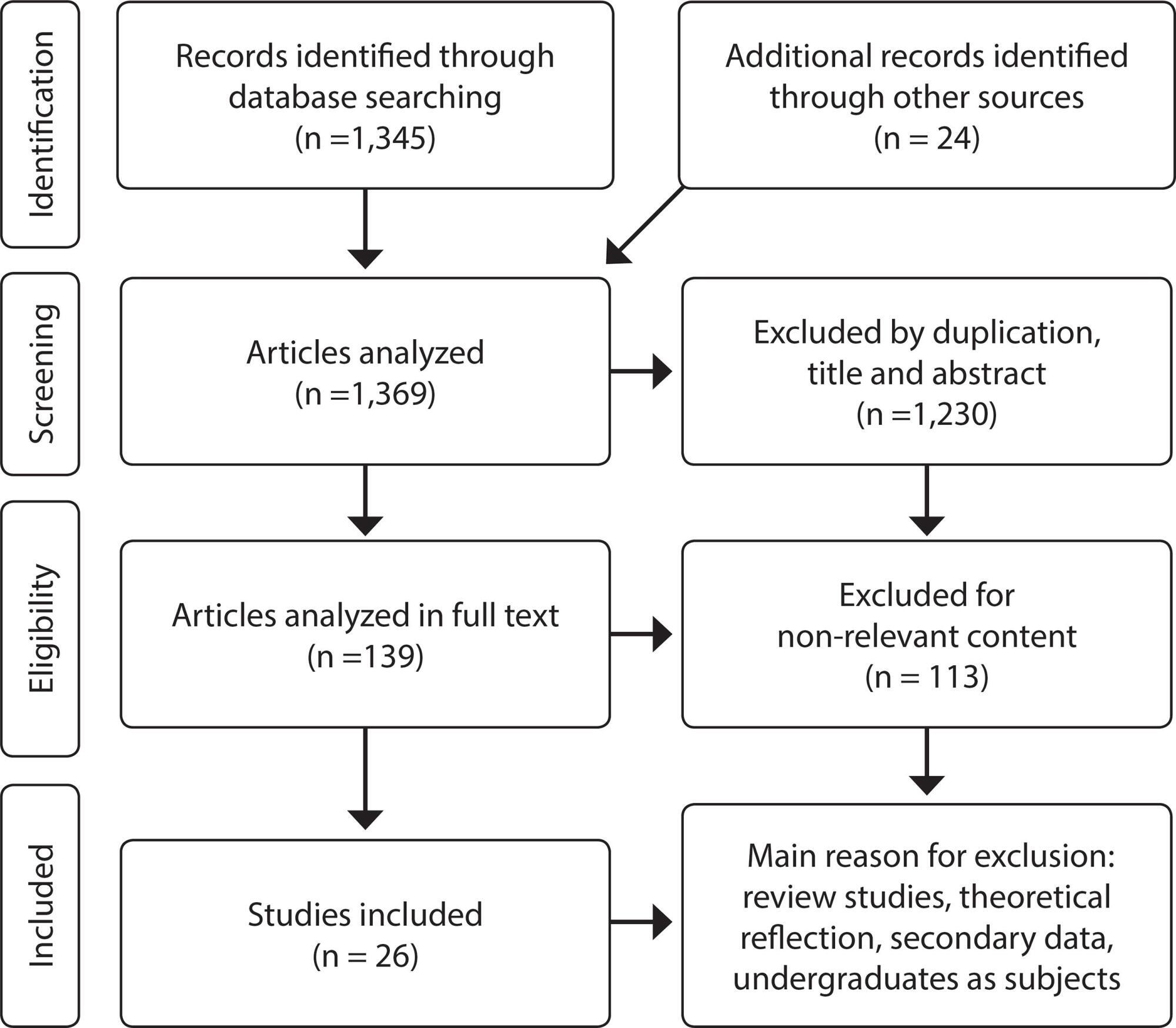
Search
Search in:
Nuvem de Tags
Adolescente (85) Atenção Primária à Saúde (239) COVID-19 (91) Criança (91) Cuidados de Enfermagem (269) Educação em Enfermagem (151) Educação em Saúde (139) Enfermagem (930) Enfermagem Pediátrica (86) Estudantes de Enfermagem (77) Estudos de Validação (131) Família (87) Idoso (208) Promoção da Saúde (99) Qualidade de Vida (104) Saúde do Trabalhador (86) Saúde Mental (145) Saúde Pública (82) Segurança do Paciente (150) Tecnologia Educacional (100)



